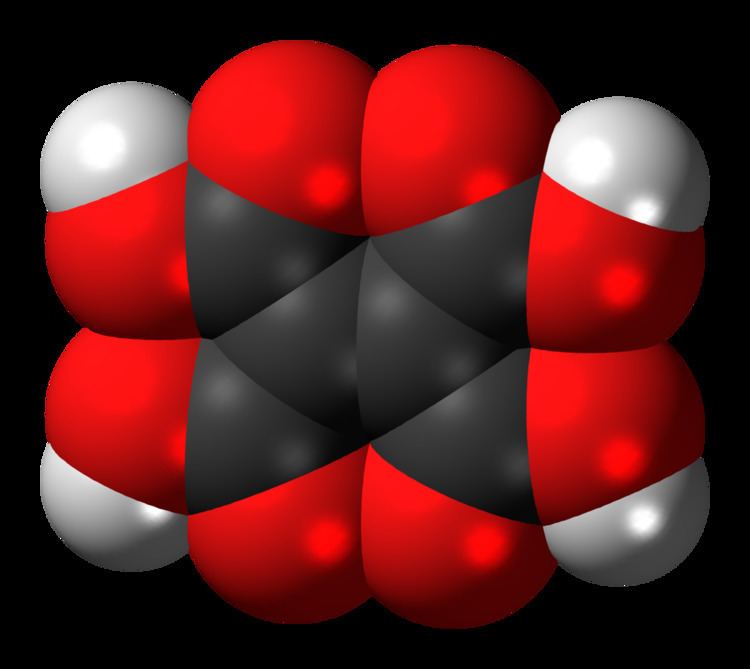 | ||
Ethylenetetracarboxylic acid is an organic compound with formula C
6H
4O
8, or (HO(OC)-)2C=C(-(CO)OH)2.
By removal of four protons, the acid yields the anion C
6O4−
8, ethylenetetracarboxylate, which is one of the oxocarbon anions (consisting solely of oxygen and carbon. By loss of 1 through 3 protons it forms the anions C
6H
3O−
8, C
6H
2O2−
8, and C
6H
1O3−
8, called respectively trihydrogen-, dihydrogen-, and hydrogenethylenetetracarboxylate. The same names are used for the corresponding esters.
The acid can be obtained by hydrolysis of tetraethyl ethylenetetracarboxylate, which in turn can be obtained from diethyl dibromomalonate with sodium iodide.
Ethylenetetracarboxylic dianhydride, a twofold anhydride of this compound, is an exotic oxocarbon synthesized by pyrolysis of ethylenetetracarboxilic acid in 1981 by Patterson and others.
